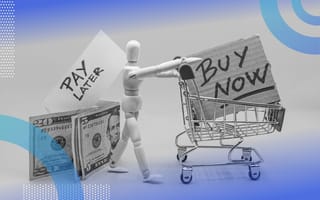Do you have any friends or family who have missed a Buy Now Pay Later (BNPL) payment and been hit with late fees by fintechs? Or have you met someone who has utilized over four different BNPL services within a month and not been able to pay back? Despite BNPL services being known for accessibility and flexibility, unregulated BNPL services can sometimes pose a threat to customers’ financial well-being and stability.
Last December, the US consumer watchdog, the Consumer Financial Protection Bureau (CFPB) felt obligated to act in order to prevent irresponsible, untrackable debt and announced a BNPL probe, requesting information from five BNPL companies: Klarna, Affirm, Zip, PayPal, and Afterpay. The probe aims to ensure fair and responsible BNPL lending so consumers don’t find themselves in the tough position described above. The regulation news didn’t come as a surprise though; the debate over the adequacy of the BNPL industry’s efforts at self-regulation has already begun in Australia and the UK.
We can’t predict exactly what shape and form any potential new regulations will take, but we do know that appropriate regulations can make a positive difference for customers and merchants — here’s how.
To Buy or Not to Buy? That Is Not the Question.
Ever heard “I have a lot of clothes, but nothing to wear” or “the new iPhone is coming soon”? The insatiable hunger to keep up with the latest trends makes Millennials and Gen Z look for alternative payment methods.
Millennials and Gen Z are often living paycheck to paycheck; this makes it difficult for them to get credit cards in the first place. And if they finally get one but rack up a bunch of debt, lowering their credit score, it can be costly since they could have to pay an annual percentage rate (APR) of up to 30 percent (or more).
It’s easy to see the appeal of BNPL. Little-to-no interest or fees to the consumer, either no credit checks or just “soft” credit checks, and the ability to pay in installments. For instance, if someone has a purchase of $100, it can be divided into four equal payments of $25, making it more digestible. The best part? Some BNPL platforms allow users to finance big purchases, such as a new sofa or a laptop, without having to pay the full amount upfront.
But there’s no rose without a thorn. Without fair and responsible lending regulations, consumers can throw caution to the wind. To illustrate, 45 percent of US adults highlighted that they used these services to make purchases that otherwise would not fit their budget, and 16 percent of BNPL users reported making five or more purchases with BNPL in an average month. The lack of reporting requirements allows a user to get loans from multiple different BNPL platforms with no oversight or accountability and without having to consider the consumer’s ability to repay the loan.
It’s a no-brainer what can happen next: Consumers don’t track their expenses and miss payments. As the situation stands with the industry, they’ll often find out what they should’ve known before accepting the terms and conditions. Some BNPL providers penalize consumers as much as 25 percent of their purchase amount for repaying late. This isn’t a problem only for the present — unregulated BNPL services can jeopardize the financial future of their users.
Once regulation becomes mainstream, consumers will be more protected with access to affordable and responsible consumer financing. With regulators cracking down, it does seem BNPL financing from banks is the safest option as banks already operate in regulated environments. They help consumers borrow responsibly and not overextend themselves, leading to better future outcomes.
How Would BNPL Regulation Affect Merchants?
Offering BNPL can help retailers increase their sales and attract more customers, as payments are easier to make. When merchants provide BNPL payment methods, they help customers purchase the item they want most, and drive a 20-40 percent lift in average order value (AOV).
BNPL solutions also enable merchants to provide customers with a seamless checkout experience. The users can apply for a loan, receive the loan approval, and make a purchase easily at the exact moment they need it. Some of the biggest retailers, Amazon and Walmart, have already jumped onto the BNPL train.
When larger banks start moving more and more into the BNPL space, merchants will benefit. A bank BNPL transaction for merchants may cost as little as 1-3 percent of the purchase value, compared to direct-to-consumer fintech transaction fees, which range from 3-6 percent. By not having to pay high BNPL transaction fees, merchants can start saving as much as 50 percent on financing rates, allowing them to offer bigger discounts and lower prices to attract more customers in the future.
Last but not least, merchants using regulated BNPL products also have the potential to boost their brand reputation and consumer trust. Instead of associating a retail brand with debt and financial trouble, customers can do business with merchants prioritizing financial responsibility, credibility, and transparency.
It was just a matter of time before regulators stepped in, but we will now see a seismic shift in the BNPL industry. The CFPB’s actions will encourage fair and responsible lending options, which promises to improve the relationship between merchants and customers.





